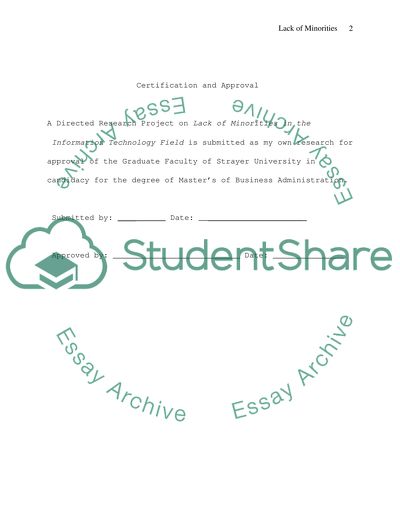Cite this document
(“Lack of Minorities in the Information Technology Field Research Paper”, n.d.)
Retrieved from https://studentshare.org/information-technology/1430946-is-there-a-lack-of-minorites-in-the-it-field
Retrieved from https://studentshare.org/information-technology/1430946-is-there-a-lack-of-minorites-in-the-it-field
(Lack of Minorities in the Information Technology Field Research Paper)
https://studentshare.org/information-technology/1430946-is-there-a-lack-of-minorites-in-the-it-field.
https://studentshare.org/information-technology/1430946-is-there-a-lack-of-minorites-in-the-it-field.
“Lack of Minorities in the Information Technology Field Research Paper”, n.d. https://studentshare.org/information-technology/1430946-is-there-a-lack-of-minorites-in-the-it-field.


